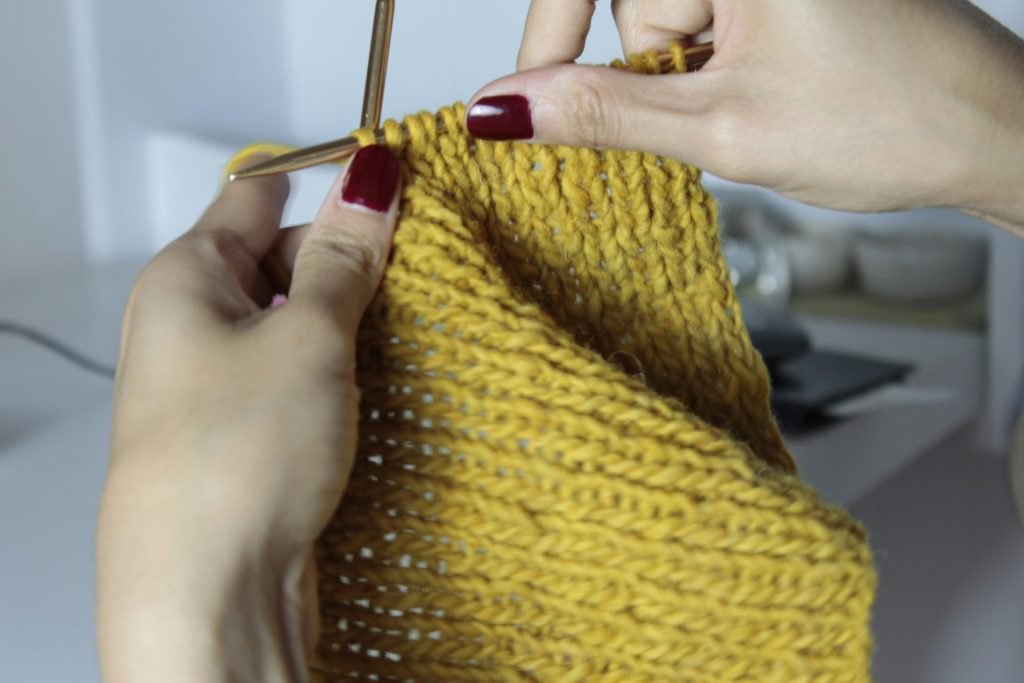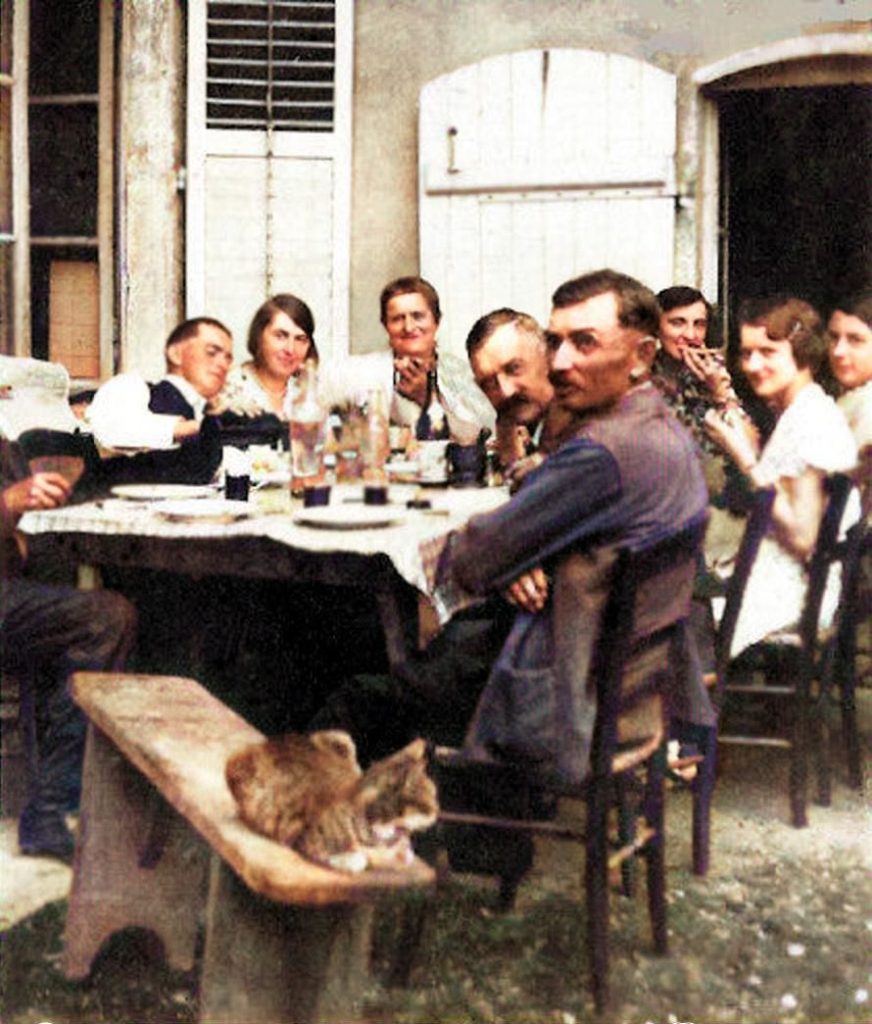When I was a child, I spent a lot of time at my grandmother’s house in Meuse. I loved watching her, spending time with her and learning from her stories. These moments helped me to understand the importance of living simply and eco-responsibly, an adjective that didn’t yet exist, but which already corresponded to a set of good practices that we can use today to preserve our planet. As I’ve grown up, I’ve never really cut that invisible thread that leads me back to her in my memories, but also to the moments shared with my other grandmother Maminie and my great-grandmother from the Landes: mamie Margot.
A simpler, more eco-responsible life: the impact of grandmothers’ habits on our times
It seems to me that everything was simpler before the arrival of modern options. Every object had real value, and consumption was much more reasoned. I remember the bed made with flannel sheets, soft in winter, made in the Vosges and a Provençal boutis-style blanket or eiderdown. Comforters were barely born, and comforter covers didn’t even exist. Today, I still treasure large, thick, white cotton sheets, beautifully embroidered with my great-grandparents’ initials: the sheets of a lifetime!
Local, less polluting food: Our grandmothers’ model
Supermarkets didn’t exist, if at all, and my grandmother went to the market once a week and to the butcher, returning with meat wrapped in paper, not in plastic trays. At her parents’ farm, meat was a product of rational consumption. A pig was fed all the leftover vegetables, and the animal was used to produce sausages, charcuterie and pâtés for months. Meat consumption was more moderate than today, reserved for events and celebrations. Meat was taken from the henhouse or hutch sparingly.
Why does this make sense today?
Reducing our meat consumption has major advantages:
- Too much red meat is bad for your health.
- Intensive livestock farming inflicts suffering and animal abuse.
- The Amazon rainforest is deforested to produce soya for intensive livestock farming.
- Livestock farming contributes to 16% of global methane (CH4) emissions.
- Cows emit as much greenhouse gas as a car driven 20,000 km.
- International animal transport is a real source of suffering.
Less meat means more sense for the planet.
Local, seasonal produce: responsible consumption
On a normal day, we’d eat soup in the evening, made with vegetables from our garden, grown without pesticides. It couldn’t have been more local, healthier or more natural. Farming was still a common activity, and these people followed nature’s cycles. Today, we no longer even know exactly which season is right for each fruit or vegetable, so disconnected are we from biodiversity and nature.

Sustainable clothing: the art of reasoned purchasing
During the Trente Glorieuses, spending on clothes was still reasoned, and was just beginning to become a source of pleasure. Quality clothing made in France was purchased for several seasons. Clothes had a value: we paid attention to them. Although globalization from the 1970s onwards introduced greater flexibility and fun into fashion, it also led to textile over-consumption and disposable fashion, which are polluting the planet today.
The ecological impact of fast fashion: Why buy less, but better?
The textile industry is the world’s fourth biggest source of pollution, due to the energy required to produce, weave, dye and make clothes.
- A large proportion of textile production takes place in Asia, creating pollution linked to shipping.
- Low prices conceal the reality of precarious work: millions of underpaid and exploited workers in Asia.
- Today, brands like Mangrose give priority to local production in Europe, enabling us to adopt more responsible consumption practices.
Circular fashion: Recovering and transforming, a heritage to be preserved
Mending, sewing, transforming! Our grandmothers knew how to do it. For example, after the war, my grandmother got married in an inside-out coat, because she couldn’t afford it. This type of reuse was common at the time. This approach prefigures what is known today as circular fashion, where clothes are repaired, recovered and given a second life. Contrary to what you might think, second-hand clothing was more widespread than you might think.

DIY (Do It Yourself): Do it yourself” is more relevant than ever
Of course, DIY already existed: we knitted, we sewed, we repaired. In the kitchen, we baked cakes, pies, jams and home-made plasters. We didn’t buy processed products, which were more harmful to our health, with their sugars, hidden fats and preservatives. In this way, our grandmothers knew how to manage their food in a more responsible and environmentally-friendly way.
Sustainable furniture: preserving quality pieces
When it came to settling in, we chose furniture that was somewhat for life, which with today’s perspective is no longer really conceivable. Furniture could be inherited and kept in the family. They were made of solid wood, by local craftsmen, and survived the decades. Today, with the explosion of cheap furniture and the incessant renewal of collections, we’ve entered the era of “ultra fast deco”. Our grandmothers, on the other hand, were content with the essentials: a beautiful tablecloth and a bouquet of flowers from the garden.

Essential, natural beauty products
When it came to body care, the model was also simpler and more respectful of the environment. Few cosmetics brands existed in the 70s, and we used bar soaps, which were much more durable and economical. Then came a host of shower gels, often filled with water in plastic packaging, each more attractive than the last. Fortunately, today, natural alternatives such as solid soap and plastic-free shampoo are making a comeback.
Fast telecommunications, but at what price?
One sector that our grandmothers didn’t experience is that of mobile telephony and the frequent renewal of handsets. Smartphones, like social networks, connect us at dizzying speed, but paradoxically, they also isolate us. My grandmother, on the other hand, used to force us to get out and walk to see her friends, have a coffee and a chat after a breath of fresh air. Human contact and real connection are essential, and technology shouldn’t
replace these moments of sharing.
The progress of household appliances and its dark side
The Trente Glorieuses saw the development of household appliances, a revolution in our daily lives, but with a hidden face: pollution. Our grandmothers did not experience the massive energy consumption and ultra-polluting technologies of the digital age. Washing machines and other household appliances are indispensable today, but they also contribute to our ecological footprint.
A return to grandmotherly practices for a sustainable future
Yes, our grandmothers were greener than we are, and today we need to relearn their eco-responsible reflexes. Reducing meat consumption, adopting sustainable fashion, doing DIY and favoring local products are all choices we can make to protect our planet. Progress is important, but at what price? Can we take a moment to reflect on the impact of our choices?
The lure of profit and the quest for progress must not be at the expense of the environment and our well-being. Let’s remember our grandmothers’ practices, learn from them and adopt more responsible consumption for a better future.

